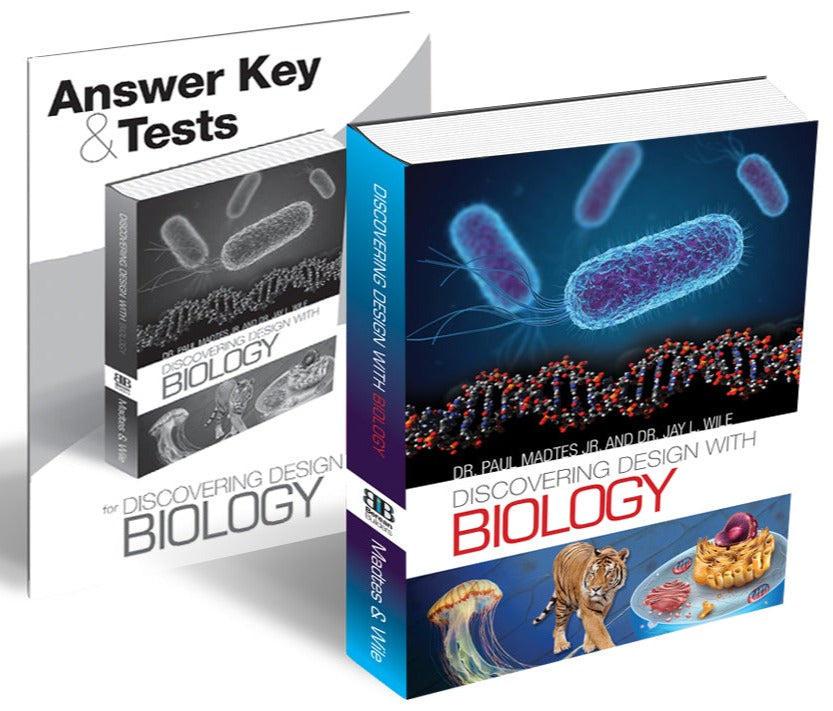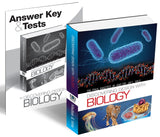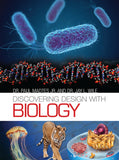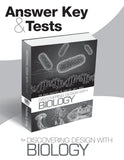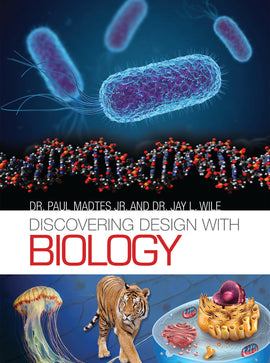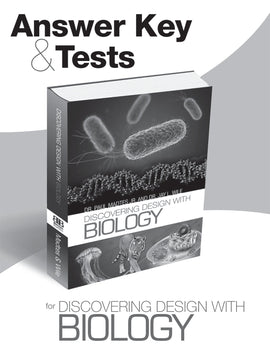Discovering Design with Biology Set
Discovering Design with Biology is a laboratory-based high school biology course is the first biology course a college-bound student should take. It gives the student an introduction to how living organisms are designed, how they interact with one another, and how they interact with their physical environment. Students are taught how biologists classify life, the chemical processes that make life possible, the structures of RNA and DNA, and the designs of the different cells found in living organisms. Students also learn the means by which photosynthesis, cellular respiration, and cellular reproduction occur. They then learn the current state of biotechnology. With the molecular and cellular basis of life covered, the students are then given a survey of the different kinds of organisms found in nature: archaea, bacteria, protists, fungi, invertebrates, vertebrates, and plants. The students then learn the biogeochemical cycles that keep environments hospitable to life, which leads to a discussion of ecosystems. Throughout the course, students see that life is the result of design and that organisms have been given the ability to adapt to their surroundings. In addition, they learn various problems associated with the modern evolutionary synthesis.
The course consists of 180 hours of instruction, 40 of which involve hands-on experiments. The experiments include extracting DNA from fruit, examining the effects of temperature and pH on enzymes, exploring osmosis and diffusion, building a pedigree, culturing bacteria, growing and examining fungi, and analyzing the structure of a feather. In addition, there are several experiments that explore the microscopic world, including identifying the stages of mitosis, studying live bacteria that were cultured by the student, identifying budding in yeast, and analyzing the microscopic structure of plants and animals. There are also four dissection experiments: the earthworm, crayfish, fish, and frog.
There are three types of experiments; household item, dissection, and microscope. To give a lab credit you must do all the household and either the dissection or microscope experiments. To give an honors credit you must do all three types of experiments. The following kits are available:
Biology Dissection Lab Kit (sold separately)
Biology Complete Microscope Lab Kit (consists of both the microscope and slide set) (sold separately)
Biology Microscope Slide Lab Kit (sold separately)
Biology Microscope (sold separately)
This product is a set consisting of both the textbook and the solutions and tests booklet containing everything the parent/teacher needs to know for the subject.
SKU 1052529
Textbook (hardcover) ISBN 979-8-9852529-4-1
Answer Key and Tests (softcover) ISBN 979-8-9852529-5-8
| Book Title | Discovering Design with Biology Set |
| Publisher: | Berean Builders Publishing |
| Author | Dr. Jay L. Wile, Dr. Paul Madtes Jr. |
Discovering Design with Biology is a laboratory-based high school biology course is the first biology course a college-bound student should take. It gives the student an introduction to how living organisms are designed, how they interact with one another, and how they interact with their physical environment. Students are taught how biologists classify life, the chemical processes that make life possible, the structures of RNA and DNA, and the designs of the different cells found in living organisms. Students also learn the means by which photosynthesis, cellular respiration, and cellular reproduction occur. They then learn the current state of biotechnology. With the molecular and cellular basis of life covered, the students are then given a survey of the different kinds of organisms found in nature: archaea, bacteria, protists, fungi, invertebrates, vertebrates, and plants. The students then learn the biogeochemical cycles that keep environments hospitable to life, which leads to a discussion of ecosystems. Throughout the course, students see that life is the result of design and that organisms have been given the ability to adapt to their surroundings. In addition, they learn various problems associated with the modern evolutionary synthesis.
The course consists of 180 hours of instruction, 40 of which involve hands-on experiments. The experiments include extracting DNA from fruit, examining the effects of temperature and pH on enzymes, exploring osmosis and diffusion, building a pedigree, culturing bacteria, growing and examining fungi, and analyzing the structure of a feather. In addition, there are several experiments that explore the microscopic world, including identifying the stages of mitosis, studying live bacteria that were cultured by the student, identifying budding in yeast, and analyzing the microscopic structure of plants and animals. There are also four dissection experiments: the earthworm, crayfish, fish, and frog.
There are three types of experiments; household item, dissection, and microscope. To give a lab credit you must do all the household and either the dissection or microscope experiments. To give an honors credit you must do all three types of experiments. The following kits are available:
Biology Dissection Lab Kit (sold separately)
Biology Complete Microscope Lab Kit (consists of both the microscope and slide set) (sold separately)
Biology Microscope Slide Lab Kit (sold separately)
Biology Microscope (sold separately)
This product is a set consisting of both the textbook and the solutions and tests booklet containing everything the parent/teacher needs to know for the subject.
SKU 1052529
Textbook (hardcover) ISBN 979-8-9852529-4-1
Answer Key and Tests (softcover) ISBN 979-8-9852529-5-8

